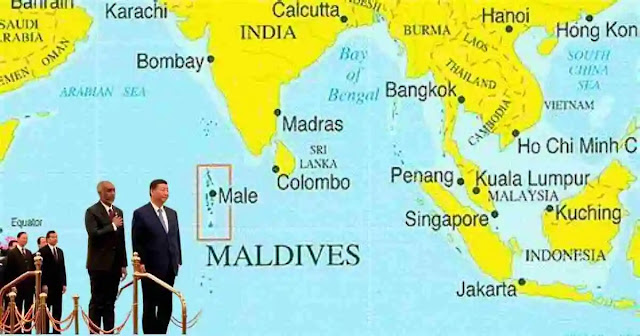For Regular Latest Updates Please Follow Us On Our WhatsApp Channel Click Here
Last updated on October 7th, 2024 at 02:28 am
A Major Power Play In The Indian Ocean: India, China, Maldives, Sri Lanka, And The Global South
The Indian Ocean, a crucial maritime artery for international trade, is witnessing a major and complex power struggle between India and China, with Maldives and Sri Lanka caught in the middle. This dynamic has significant implications for international trade vessels navigating the region including The Indian Ocean and the Global South.
Tensions and Uncertainties:
Strained India-Maldives Relations:
For Regular Latest Updates Please Follow Us On Our WhatsApp Channel Click Here
Recent criticism of India’s tourism campaign by Maldivian President Muizzu, coupled with his closer ties with China, creates uncertainty for trade routes.
Maldives’ Pivot to China:
Increased agreements between Maldives and China raise concerns about potential shifts in foreign policy and trade partnerships.
Sri Lanka’s Balancing Act:
Balancing pressure from both India and China, Sri Lanka’s moratorium on foreign research vessels highlights the strategic complexities.

Economic and Infrastructure Games:
China’s Belt and Road Initiative (BRI):
Infrastructure projects in both Maldives and Sri Lanka offer opportunities but raise concerns about debt traps and dependence on China.
India’s Strategic Investments:
India might divert investments to counter China’s influence, potentially impacting existing trade patterns.
Trade Wars on the Horizon?
Environmental and Resource Risks:
Illegal & Unlawful Fishing:
The presence of large fishing fleets, both Chinese and others, threatens overfishing and resource depletion, impacting sustainable trade practices.
Maritime Piracy:
While declining, a resurgence could disrupt trade routes and increase insurance costs.
Climate Change:
Rising sea levels and extreme weather events pose threats to infrastructure and trade flows.
Navigating the Uncertainties:
The impact on international trade vessels depends on various factors:
Intensity and Duration of Tensions:
Prolonged tensions between China and India can significantly disrupt trade and trade routes in The Indian Ocean and the Global South.
Transparency and Sustainability of Infrastructure Projects:
China’s opaque projects raise serious concerns about debt traps and long-term trade implications.
Regional Cooperation and International Regulations:
Effective frameworks by China can mitigate risks and ensure smooth trade flow through The Indian Ocean and the Global South.
Conclusion:
The Indian Ocean scenario demands that India closely monitor and mitigate the risks for international trade. Balancing power dynamics, ensuring transparency in infrastructure projects, and fostering regional cooperation by China appear to be quite crucial for a stable and prosperous maritime environment in the Indian Ocean and the Global South at large.
Additional Resources:
For Regular Latest Updates Please Follow Us On Our WhatsApp Channel Click Here